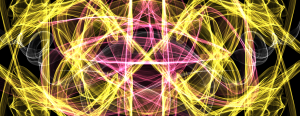.fluid
this project involves a speaker, non-newtonian fluid, and a touch sensitive table surface. Non-newtonian fluids are fluids in which the rate of deformation is not linearly related to the forces trying to deform that fluid. One type of non-Newtonian fluid, which is being used in this video (probably cornstarch and water), gets more viscous as it gets more agitated. If this fluid is placed on top of a speaker and vibrated at high frequencies, the fluid begins to get more viscous and can form little towers and blobs. It appears that in this project the interactive component involves controlling the frequency (or perhaps also amplitude) of the speaker. I enjoy that multiple people can contact the table and the effects of this change are fairly visible in the behavior of the fluid. In fact I think that this is more interesting in the liquid itself. I wonder how the sensors work
here is another example of non-newtonian fluid on a speaker
Interactive Robotic Painting Machine
This project uses a genetic algorithm to create various iterations of strokes on a canvas. The GA takes inputs from a microphone to somehow evaluate a given sequence of strokes, and create a new sequence based on those external inputs. The machine has the ability to listen to itself. Unfortunately there is not much information on the website about the details of the GA and how exactly it is processing the sound input and what the GA is optimizing for. The general concept is fascinating, and the machine itself is beautiful.
click on link to see video (this video can’t be embedded unless permission is given. oh well),
a little physical graph. I kind of like this because it could go in so many directions. It makes me think of some sort of configurable sculpture. Sculptures that are visualizations of data. The idea of a piece of string being pulled by motors is simple and could be modified in many ways. The string could be stretchy, the motors could be replaced with linear actuators or a combination of linear actuators and servos to allow for and and depth change. I don’t like how slow and jerky this model is, but I am sure with some nice servos and more wires it could be pretty slick.

